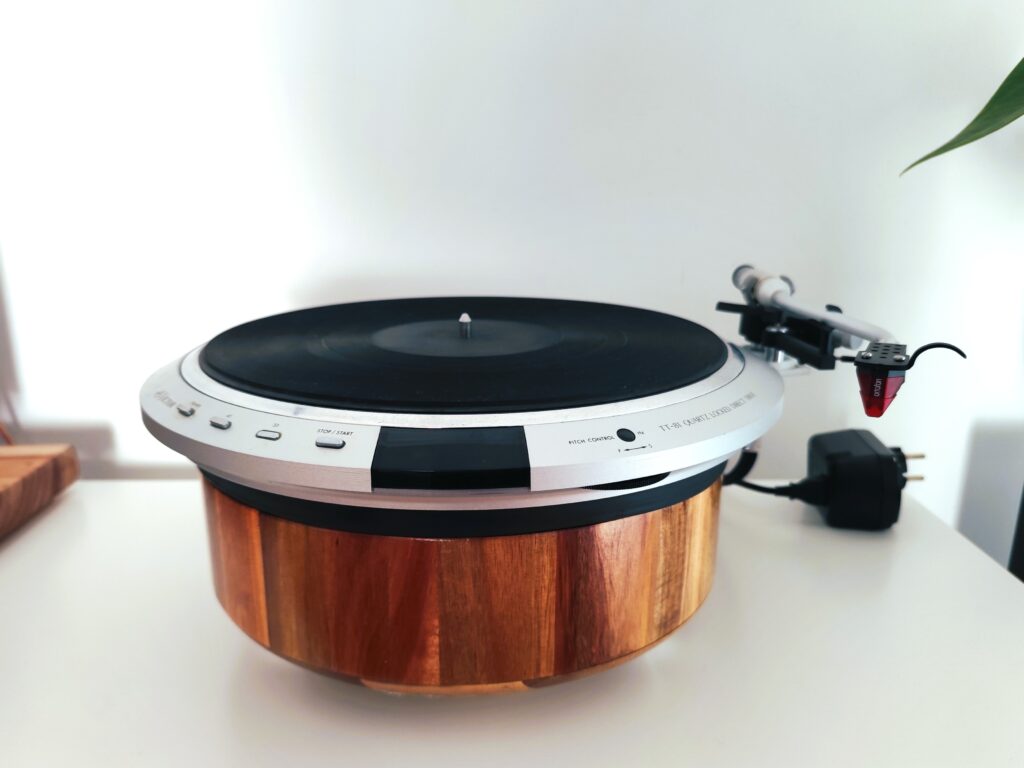The Victor Company of Japan, Ltd. (JVC) was founded in 1927 as the Japanese subsidiary of the Victor Talking Machine Company (USA). It initially stood out for the production of gramophones and records, and was responsible for introducing innovations in Japan such as the electric phonograph and, later, VHS, which went on to become the worldwide standard.
In Japan, the brand used the name Victor and the famous logo of the dog “Nipper” with the gramophone (“His Master’s Voice”), while in international markets it became better known as JVC (Japan Victor Company).
In the high-end audio field, Victor/JVC produced, during the 1970s and 1980s, some of the most sophisticated direct-drive turntables in the world, such as the TT-101, TT-81, and TT-71, which are still highly respected today by collectors and audiophiles for their precision, robust construction, and technological innovation.
The Victor/JVC TT-81 was developed as the successor to the TT-101, inheriting much of its advanced technology.
The TT-101’s digital speed counter was replaced with a stroboscope, and other peripheral mechanisms were reorganized to reduce production costs without compromising performance.
It adopts a high-precision quartz-locked FG servo integral detection system. In addition, it is equipped with a 1 Hz step pitch control, similar to the TT-101, allowing adjustments of ±6 Hz.
At its core lies a high-torque, brushless DC motor with 12 poles and 24 slots. The basic servo system that controls this motor employs a ± two-direction servo system, similar to that of the TT-101, offering superior constant-speed performance compared to conventional systems that reduce speed simply by cutting the motor drive current.
The TT-81 is also equipped with an electronic braking system. When the stop button is pressed, reverse current instantly flows into the motor drive circuit, and rotation is quickly halted by reverse rotational force.
These models—the TT-101, TT-81, and TT-71—still highly respected by collectors today, continue to demonstrate the exceptional quality of Japanese engineering. Their design, futuristic for the time, remains modern and elegant, and their build quality can be felt in every detail. If you find one in good condition, it is without doubt an excellent purchase for anyone who values top-tier analog sound.
In this case, the TT-81 has been paired with the Denon DA-307, an S-shaped tonearm from the 1970s, known for its dynamic damping system, which reduces unwanted resonances and improves compatibility with different cartridges, along with full VTA adjustment.
It is praised for its neutral and transparent sound and its excellent tracking ability. With elegant design and solid engineering, the DA-307 remains a respected classic — a versatile and reliable tonearm, still capable of high-level performance today.
Victor TT 81
Motor: DC servomotor
Drive system: direct drive
Speeds: 33 and 45rpm
Speed detection: integrated frequency generator
Servo system: quartz locked positive and negative servo control
Starting time: within 1 second
Wow and flutter: 0.025% WRMS
Rumble: 63dB
Speed deviation: within 0.002%
Platter: 310mm diecast aluminium
Dimensions: 150 x 358 x 358mm
Weight: 8kg
Denon DA 307
Type: dynamically balanced, static balance type
Overall length: 332mm
Effective length: 244mm
Overhang: 14mm
Height adjustment: 42 to 70mm
Stylus pressure: 0.1g sub scaled vernier type dial
Cartridge weight range: 5 to 10g

























